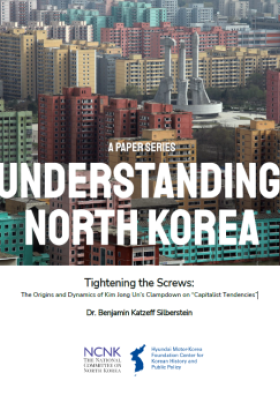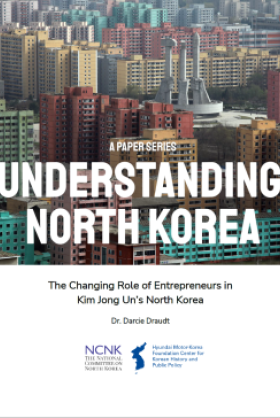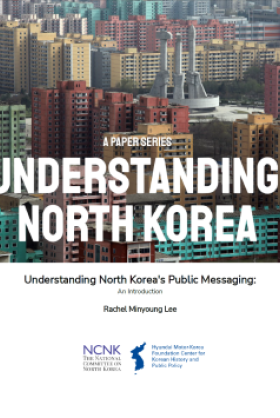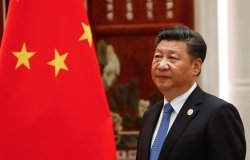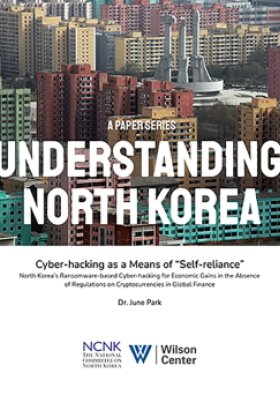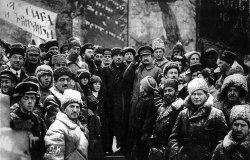273. Ana Pauker: Dilemmas of a Reluctant Stalinist
A defining moment during my two-year stay in Romania, struggling with the archives there, occurred when an American history doctoral student, who was in Romania on a Fulbright grant, turned to me one day and earnestly asked why on earth I would ever pick Ana Pauker as a subject for a biography. He evidently failed to see the irony in his question, since he was writing a biography of Ion Antonescu, the wartime dictator of Romania.
Clearly his seemingly sincere question reflected Ana Pauker's enduring reputation as a monster (or as Princess Ilana of Romania colorfully put it, a voracious boa constrictor). She was believed to have been personally responsible for all the horrors of the Stalinist period (particularly the forced collectivization of the peasantry and internal purges in the party during the ‘anti-Tito' campaign), and to have callously denounced her own husband during the Great Terror of the late 1930s—leading to his liquidation as a Trotskyite. (This last detail was recently updated by a former Romanian secret police general, who suggested that Pauker had actually shot her husband in Stalin's office.)
This image of Ana Pauker, which has remained strong throughout the post-1989 period, was an image that has been generally accepted by Western scholars, who had no way of objectively assessing the situation in the Soviet satellites, and who unanimously viewed Pauker as a particularly doctrinaire fanatic whose "subservience to Moscow was not only undisputed, [but] legendary."
Another ‘defining moment' was my meeting a large contributor to the Center for European and Russian Studies at UCLA, an elderly Jewish businessman who enjoyed meeting students every now and then to see, presumably, where exactly his money was going. And given my writing a dissertation on a prominent Jewish woman, the Center thought it apt for me to meet with him. But, when he heard what exactly I was writing on, the donor was so incensed that he nearly rescinded his connection to the Center! It took a lot of very delicate diplomacy to calm him down.
His irritation clearly reflected the way Ana Pauker has been dealt with in Jewish historiography, which is wholly negatively. At best, she was simply ignored, largely because of the conventional view that Jewish Communists were ‘non-Jewish Jews' with little connection or identification with the Jewish community, and thus outside the purview of Jewish history. But, here too, it seems that Pauker's reputation was worse than most. As the Israeli historian Raphael Vago noted, Pauker has long been seen as an ‘archetype of self-hatred' among Jewish communists.
In responding to such challenges, I usually rather instinctively referred to the findings in my book, that Ana Pauker's long-established image as both an extreme Stalinist and a self-hating Jewish anti-Semite was largely myth. The Ana Pauker I discovered is a highly enigmatic figure who was characterized more by contradictions than dogmatism: a Communist leader who was fanatically loyal to Stalin and the Soviet Union, but one who actively opposed the Stalinist line in a number of crucial areas: agricultural policies (she opposed the forced collectivization of the Romanian countryside); party purges of Romanian ‘Titoists,' including the veterans of the Spanish Civil War and the French Reisistance; the escalating class struggle after the consolidation of the socialist regime (Stalin's dictum that the class struggle actually intensifies as socialism advanced); and the halting of mass Jewish emigration to Israel (she promoted it in 1950 and 1951, when all other satellites had put a stop to it).
Pauker's dissent on these issues, moreover, did not take place during the early postwar years, when the policy of ‘domesticism' reigned in the Soviet Bloc, allowing each People's Democracies to pursue its own ‘local path to socialism.' Rather, it occurred during the heyday of ‘high Stalinism' (that is, between Tito's expulsion from the Cominform in 1948 and Stalin's death in 1953)—and her actions so far presents the most striking instance of a satellite resistance to Soviet domination during that crucial period.
Still, is Pauker's story anything more than of anecdotal value? Or are there important historical lessons here? Certainly for Romanians, the revelations in my book go a long way in explaining a number of glaring anomalies during the early communist period in Romania. Why was it that, despite the Romanian Communists' long-established reputation for sectarianism (with their supposed goal of achieving—to quote Kenneth Jowitt—a ‘breakthrough' that completely transformed Romanian society as quickly as possible), did not produce an ‘anti-Tito' show trial during Stalin's last years (as their contemporaries did in Czechoslovakia, Bulgaria, and Hungary)? And why was it that (by 1952) they were last among the People's Democracies in the amount of land they had collectivized? The answer I have found much evidence for is: the Ana Pauker faction.
In addition to this, I would like to offer a few more historical lessons of Pauker's story. In my book, I talk a lot about the fact that Pauker's fall (and that of Jewish communists generally) fit an age-old, recurring pattern in Jewish history: (in Jacob Talmon's words) "the transformation from indispensable pioneer to usurping parasite." This pattern fit a general rule concerning ‘out-groups' in society: when a new ethnic or religious group enters an already settled land, it finds it difficult to penetrate the established economic and social positions. The majority will not allow their competition, and it will tolerate their presence only if they enter into new positions that satisfy economic needs. The out-groups must therefore become pioneers—but once these out-groups establish themselves, the majority begins to covet the new positions.
All this played itself out in the illegal Romanian Communist Party during the interwar period. When the Party was an illegal underground, Jews and other minorities made up a large proportion of its members. But once it became the new establishment, its Jewish pioneers began to be seen as undeservedly and disproportionately privileged. From the late 1940s on, a permanent purge ensued that replaced Jewish veterans with ethnic-Romanians.
Further, Pauker's story fits the general rule of Jewish revolutionaries during the late 19th and 20th centuries. What particularly attracted Jews to the revolutionary movement was its universalism. Indeed, the only ones who took this component seriously were Jews. As Hannah Arendt once observed, Jews were the only true intra-European element on the continent. In Russia, Jewish revolutionaries were practically alone among their fellow radical populists to embrace cosmopolitan socialism. "Russian or German socialists might pay lip service to cosmopolitanism as an ideal," the historian Erich Goldhagen observed, "but it did not occur to them to work towards the dissolution of the Russian or German peoples; at most, for these socialists, it meant elevating themselves above parochial patriotism, to serve and owe loyalty to the working classes of all nations whose interests they believed to be identical with the interests of the whole of humanity." Or as the Hebrew novelist Chaim Hazaz once wrote, while Russian, German, or French revolutionaries struggled to redeem the proletariat of their own countries, Jewish revolutionaries set out to save the entire world.
The reason for this discrepancy is clear: Cosmopolitanism was basically the patriotism of the nation-less. Jewish revolutionaries consciously sought to free themselves (and the Jewish people) from nationalist oppression by eliminating and transcending nationalism once and for all. Jews will find liberation when all peoples are liberated under the rubric of socialist internationalism. And this lofty goal seemed quite attainable to Jewish revolutionaries, whose very lives personified the cosmopolitan ideal.
But one thing kept these Jews from surrendering themselves to universalism completely: anti-Semitism within the revolutionary movement itself. This was largely opportunist anti-Semitism, a belief that anti-Semitic sentiments among workers could be channeled into revolutionary consciousness. It was seen both in Russia (with revolutionaries' reluctance to criticize the pogroms of 1881) and in Western Europe. Leftist anti-Semitism caused a crisis for Jewish revolutionaries, and it led some to take a step back and work towards Jewish, as well as universal, liberation.
The Jewish revolutionary was faced with a contradiction: even though class lines in the Jewish community were clearly drawn, antisemitism also made all Jews nationally oppressed. Hence: the desire of Jewish proletariat/poor/women/intellectuals to break with the Jewish rich/establishment/bourgeoisie and join a general Russian revolutionary movement. National persecution hampered just such a move—and effectively kept revolutionaries ‘Jewish.' This phenomenon—the tendency of Jews to identify with the universalist aspects of the revolutionary struggle—but at the same time—being forced to hold back because of antisemitism—is a major characteristic of Jewish revolutionaries throughout the late 19th and 20th centuries.
This was seen with the General Labor Bund of Poland and Russia, which eventually adopted a more nationalist, or autonomist, political line (leading to its break with Lenin). Interestingly, it was not the ‘masses' or the organized rank-and-file that demanded a more nationalist stance; it was the cosmopolitan intellectuals. The intellectuals in the Bund's leadership adopted the national autonomy platform over the objections of the ‘worker groups' in part because the Bundist intelligentsia in exile in Western Europe demanded they do so. These cosmopolitan intellectuals were reacting to the Dreyfus Affair—and the socialists' unwillingness to speak out about it.
In many ways, the intellectuals were one step ahead of the Bundist workers. Having embraced universalism and living genuinely cosmopolitan lives in the West, they became disillusioned when faced with leftist anti-Semitism and consequently took a step back. In contrast, the workers—largely in contact only with Jewish employers—still had not experienced such disillusionment.
This dynamic can be discerned in Pauker's actions after WWII. Her example suggests that, in certain cases, it was the old guard leaders (especially the Muscovites who had spent time in the USSR), who first acknowledged the truth about the degeneration of Stalinism, and it was they who first favored a more reformist stance. Finally, one last point about Pauker's "reformism." It was large futile. Given her ethnic background and gender, she could never be seen as a legitimate ruler of Romania. No matter how liberal or tolerant or patriotic she became, she was always seen as an outsider who had no place in the country's leadership.
About the Author
Robert Levy
Read More
Global Europe Program
The Global Europe Program is focused on Europe’s capabilities, and how it engages on critical global issues. We investigate European approaches to critical global issues. We examine Europe’s relations with Russia and Eurasia, China and the Indo-Pacific, the Middle East and Africa. Our initiatives include “Ukraine in Europe” – an examination of what it will take to make Ukraine’s European future a reality. But we also examine the role of NATO, the European Union and the OSCE, Europe’s energy security, transatlantic trade disputes, and challenges to democracy. The Global Europe Program’s staff, scholars-in-residence, and Global Fellows participate in seminars, policy study groups, and international conferences to provide analytical recommendations to policy makers and the media. Read more



